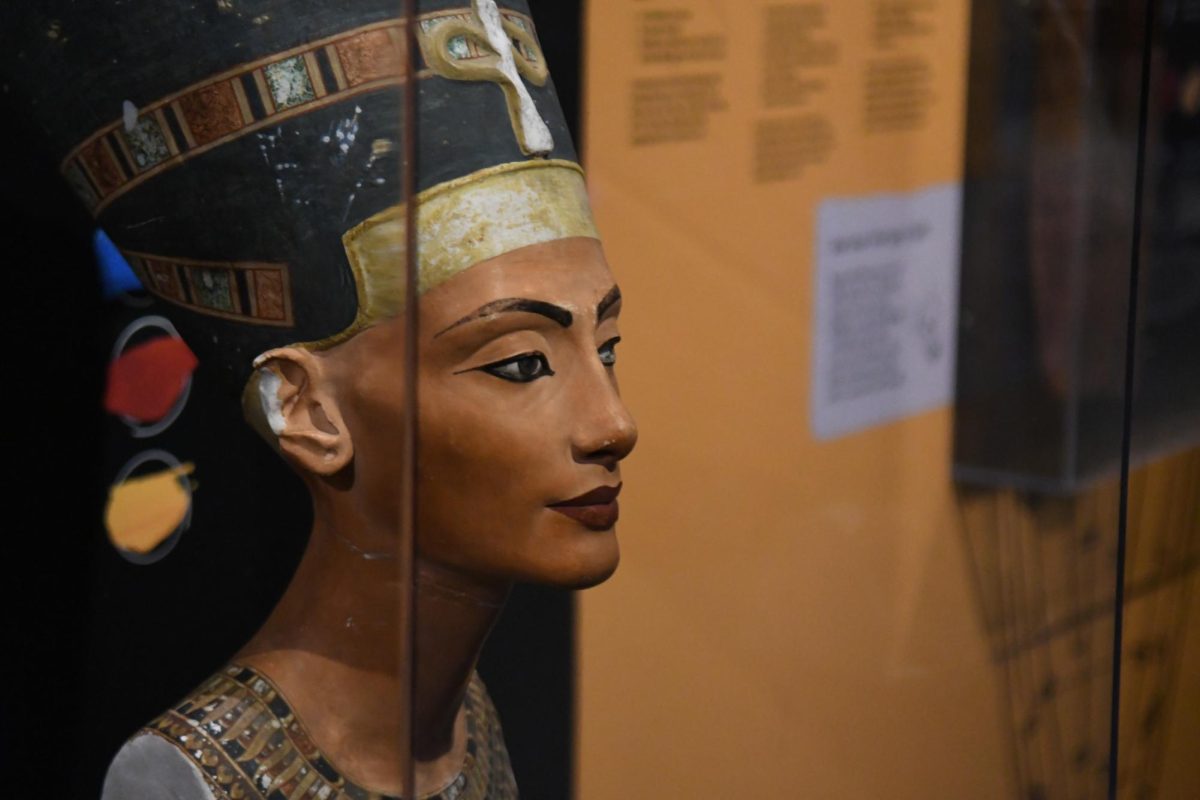The Carnegie Museum of Natural History revealed its newly revamped Ancient Egypt collection in early March. After closing the Walton Hall of Ancient Egypt in 2023 for conservation efforts, “The Stories We Keep: Conserving Objects from Ancient Egypt” welcomes the return of more than 80 relics in a display that allows visitors to follow the restoration and preservation process of ancient artifacts.
The exhibit, which will remain open until next year, sits in the R.P. Simmons Family Gallery. It represents the convergence of science and art. The collection highlights the work of conservationists that often goes unnoticed behind the scenes of many preservation efforts for exhibits.
Upon entering the gallery, the Visible Conservation Lab draws visitors’ attention. The lab is a large area enclosed by glass walls where conservators work on many of the museum’s projects, including the 4,000-year-old Dahshur boat, one of only four that still exist today.
The Dahshur boat, under the care of Mostafa Sherif, an expert conservator of ancient wood, is the focal point of the exhibit. While it is not currently on display, as conservators are still working to repair the boat after many years of wear and tear from being on view, visitors can learn of its rich history through a series of infographics.
As a part of the museum’s R.W. Moriarty Science Seminar series, an educational opportunity offered free to museum attendees, Sherif spoke about his process of documenting and analyzing the Dahshur boat. He said conservation is a meticulous and delicate process that requires great attention to detail.
“I have to ask myself first, what is the missing data I need to know, what materials I need to use, what’s the condition I need to know,” Sherif said. “After I answer my questions I will choose the closest or the suitable test or types of tests and can use it.”
Apart from watching Sherif and other conservators work on the real-time preservation of the Dahshur boat, visitors can engage in their own work by attempting to reconfigure the pieces of a replica Egyptian vase and observe small details of objects with microscopes. In a press release for the exhibit, Lisa Haney, assistant curator and Egyptologist, said the exhibit is truly one of a kind.
“This is an entirely new experience for visitors,” Haney said. “It connects us to ancient people in a new way, encouraging us to think differently about our own everyday objects and the stories they tell.”
The interactive element of the “Stories We Keep” exhibit allows patrons to take the mystery and wonder of Ancient Egypt into their own hands, exploring new parallels between ancient relics and modern-day objects. One standout feature of the collection is the presentation of artifacts side-by-side with modern equivalents, including an Egyptian sandal with a toe post next to a plastic flip-flop.
Exploring connections between the past and the present allows researchers to examine the evolution of culture and science. Relating the old with the new evokes similarities between ancient and contemporary technologies and their uses, even with items as simple as shoewear, Haney said.
Haney said the exhibit’s content aids in visitors’ understanding of Egyptian culture.
“One of the things that draws me and … one of the things that draws people to Ancient Egypt as well is that it’s so old, it’s such an old culture,” Haney said. “I think the thing that I am most proud of is the number of people who work at the museum who have commented on how accessible the content is … That’s what makes it easier for people to connect with the story to learn, to be able to engage with the information that we want people to be able to share.”
The art of conservation applies principles of scientific analysis to answer questions about ancient civilizations and artifacts. As seen displayed at the museum, conservators employ several techniques including mass spectroscopy, ultraviolet light and 3D scanners to uncover the secrets beneath the surface of an object.
Visitors have opportunities to engage with conservators and curators throughout the exhibit. The museum encourages attendees to submit questions via QR code, which experts later answer on social media. Active participation in the exhibit allows attendees to drive their own learning process, encouraging visitors’ curiosity about the conservation and preservation of ancient cultures.
Gretchen Anderson, conservator and head of the museum’s section of conservation, said she was excited to share her department’s work with the Pittsburgh community.
“I am so excited about, well, the support that I got from our exhibit’s department … I’m so tickled about how the exhibit was working and how it looks, and the story that we’re getting across,” Anderson said. “I’ve been dreaming of this, like I said, I’ve been doing [visible conservation] for many decades and I am absolutely thrilled.”


